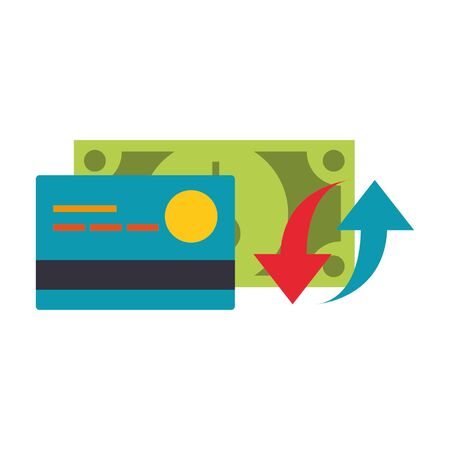Rethinking Housing and Living Arrangements
For many Americans, housing is the biggest monthly expense. But what if you could cut your living costs without giving up comfort or community? Here are some innovative ways to rethink where and how you live, tailored for American lifestyles.
House Hacking
House hacking means using your home to generate income—often by renting out a spare room, basement, or even a converted garage. This approach can make a mortgage much more manageable or even cover it entirely. Many young professionals and families in cities like Austin or Denver have found roommates through apps like Craigslist, Facebook Marketplace, or even dedicated platforms like Roomi.
Example House Hacking Setups
| Option | Description | Potential Savings |
|---|---|---|
| Rent out a spare bedroom | Share your space with a roommate or short-term renter (Airbnb) | $700–$1,500/month |
| Basement apartment | Create a separate unit in your home and lease it out long-term | $1,000–$2,000/month |
| Garage conversion | Convert your garage into an apartment for rental income | $800–$1,200/month |
Co-Living Arrangements
Co-living isn’t just for college students anymore. Across the US—from Brooklyn to Los Angeles—adults are choosing co-living communities that offer private bedrooms and shared common spaces. These setups come with built-in social networks and often include utilities, cleaning services, and even events—all for less than traditional rent.
Benefits of Co-Living
- Lower monthly rent due to shared expenses
- No need to buy furniture (most are fully furnished)
- A built-in community for networking and support
- Simplified bills (one payment covers everything)
Downsizing Your Space
If you’re an empty nester or simply want less to clean and maintain, downsizing can be liberating. Moving from a three-bedroom house in the suburbs to a well-designed apartment or condo can cut costs on utilities, property taxes, and upkeep. The tiny house movement is also gaining traction among those who want to own outright with minimal debt.
Moving to Lower-Cost Areas
The rise of remote work has opened up new possibilities. Many Americans are relocating from expensive cities like San Francisco or New York City to more affordable regions such as the Midwest or South. You can maintain your salary while enjoying a much lower cost of living—and still find vibrant communities with plenty of amenities.
Cost Comparison: Major Cities vs. Affordable Areas
| Location | Average Monthly Rent (1BR) | Typical Utility Costs |
|---|---|---|
| San Francisco, CA | $2,900+ | $200–$300 |
| Austin, TX | $1,500–$1,900 | $150–$200 |
| Kansas City, MO | $950–$1,200 | $100–$150 |
| Birmingham, AL | $850–$1,100 | $90–$140 |
By exploring creative housing options and thinking outside the box about where you live, you can dramatically reduce expenses while keeping your lifestyle enjoyable and connected.
2. Slashing Transportation Expenses
Why Transportation Costs Matter in America
Transportation is one of the largest household expenses for many Americans, especially in sprawling suburbs and car-dependent cities. But with a little creativity and willingness to change habits, you can save hundreds or even thousands of dollars a year—without sacrificing your freedom or lifestyle.
Public Transit: An Underused Money-Saver
Many U.S. cities have improved public transit options in recent years. Buses, trains, and light rail systems can dramatically cut monthly commuting costs compared to driving. If you live near a transit line, try mapping your regular routes and comparing the cost against gas, insurance, parking, and maintenance. Many employers also offer pre-tax commuter benefits that make public transportation even more affordable.
Sample Monthly Commuting Costs
| Mode | Average Monthly Cost |
|---|---|
| Driving Alone (Car) | $350-$600 |
| Public Transit Pass | $70-$130 |
| Biking | $20-$40 (maintenance) |
| Carpooling | $100-$200 |
Carpooling: Save Money and Build Community
If public transit isn’t an option where you live, consider carpooling. Sharing rides with coworkers, neighbors, or friends cuts your gas bill and reduces wear and tear on your vehicle. You’ll also get access to HOV lanes in some areas, which can shorten your commute time. Use apps like Waze Carpool, CarpoolWorld, or simply coordinate with people in your local Facebook groups.
Remote Work: The Ultimate Cost Cutter
The shift toward remote work is one of the most radical ways Americans are saving on transportation. If your job allows it, working from home even a few days per week means fewer trips, less money spent on fuel, tolls, parking, and auto repairs—and more time for yourself. Talk to your employer about flexible work-from-home arrangements if you haven’t already.
Biking: Good for Your Wallet and Health
Biking isn’t just for big cities anymore—many suburban communities are investing in bike lanes and trails. A good-quality bicycle pays for itself quickly when used for daily commutes or errands. Plus, you’ll save on gym memberships by getting exercise on your way to work or the store.
Tips for Transitioning to Cheaper Transportation
- Test out public transit routes before fully committing.
- Find a carpool partner who lives nearby with a similar schedule.
- If biking interests you, check local maps for safe routes and invest in basic safety gear.
- Ask your HR department about remote work options or flexible schedules.
- Track your monthly transportation expenses to see real-time savings as you make changes.
By rethinking how you get around and taking advantage of these alternatives, it’s possible to keep more of your hard-earned money without giving up convenience or quality of life.

3. Smart Shopping and Food Savings
Cutting Your Grocery Bills
Grocery shopping is a big part of most American households’ budgets. With food prices on the rise, it’s important to find ways to save without sacrificing the quality of your meals. Here are some simple strategies to help you cut costs at the grocery store:
Meal Planning
Planning your meals for the week can keep you from buying unnecessary items and helps reduce food waste. Make a list before you shop and stick to it. You’ll be surprised how much this simple habit can save!
Shopping at Discount Stores
Stores like Aldi, Trader Joe’s, and local discount grocers often offer lower prices on staple items compared to traditional supermarkets. Don’t hesitate to explore these options for your weekly shopping.
Joining Warehouse Clubs
Membership-based warehouse clubs like Costco, Sam’s Club, or BJ’s Wholesale can offer significant savings if you’re able to buy in bulk. This works especially well for families or shared households where groceries get used up quickly.
| Store Type | Savings Potential | Best For |
|---|---|---|
| Discount Grocers (Aldi, Lidl) | 10-30% off regular prices | Weekly essentials, produce |
| Warehouse Clubs (Costco, Sam’s Club) | Bigger packs, bulk discounts | Families, meal prepping |
| Mainstream Supermarkets (Kroger, Safeway) | Loyalty programs, sales events | Name brands, variety seekers |
Using Coupons and Apps
Digital coupons and cashback apps like Ibotta or Rakuten can help you save extra money on both groceries and dining out. Sign up for loyalty programs at your favorite stores—these often provide exclusive discounts and digital coupons that add up over time.
Dining Out Without Overspending
You don’t have to give up eating out altogether to save money. Try these tips to keep dining expenses in check:
- Meal Sharing: Many restaurants serve large portions—consider splitting an entrée with a friend or family member.
- Happy Hour Specials: Take advantage of happy hour deals for drinks and appetizers instead of full-price dinners.
- Dine-In Deals: Look for restaurants that offer kids-eat-free nights or discounted combo meals.
- Loyalty Programs: Join your favorite spots’ rewards programs for free food or discounts on future visits.
Quick Reference Table: Ways to Save on Food
| Savings Method | Description |
|---|---|
| Meal Planning | Avoids impulse buys and food waste by sticking to a list. |
| Discount Stores & Bulk Buying | Cuts costs by buying generics or in larger quantities. |
| Coupons & Cashback Apps | Adds instant savings on groceries and restaurant bills. |
| Meal Sharing & Specials | Lowers dining out costs by splitting plates or using promotions. |
The key is being intentional about where and how you spend on food. With a few tweaks to your routine, you can enjoy delicious meals while keeping more money in your wallet!
4. Cutting the Cord: Entertainment and Subscriptions
Say Goodbye to Traditional Cable
Cable TV packages in America can easily cost $100 or more per month, but today there are plenty of ways to watch your favorite shows without paying for expensive cable. Many people are “cutting the cord” and switching to streaming services or free alternatives.
Streaming Hacks to Save Money
Streaming services like Netflix, Hulu, Disney+, and HBO Max offer more flexibility, but those monthly subscriptions can add up fast. Here are some simple hacks to keep costs down:
- Rotate Subscriptions: Only pay for one or two streaming services at a time. Binge your favorite series, then switch when you’re done.
- Family & Shared Plans: Many services offer family or group plans. Split the cost with friends or relatives (just be sure to check the provider’s sharing policies).
- Look for Student or Military Discounts: Some platforms offer special pricing if you qualify.
- Free Trials: Take advantage of free trial periods to catch up on shows or movies for a few weeks at no cost.
Popular Streaming Platforms & Shared Plan Options
| Service | Monthly Cost (Basic) | Shared Plan? | Notes |
|---|---|---|---|
| Netflix | $6.99+ | Yes (Standard & Premium) | Can share with up to 5 profiles, but now limited by location |
| Hulu | $7.99+ | No (Individual) | Add-ons available; bundle with Disney+/ESPN+ for savings |
| Disney+ | $7.99+ | Yes (Up to 4 devices) | Family-friendly content; bundled offers save more |
| HBO Max | $9.99+ | No official sharing, but supports multiple profiles | Tons of new releases and classics |
| Amazon Prime Video | $8.99+ | No (Individual) | Included with Amazon Prime membership; some content may cost extra |
| PBS App / Pluto TV / Tubi TV / Freevee | $0 (Free) | N/A | No subscription fees; includes ads; great for older shows and movies |
Your Local Library: The Hidden Gem for Entertainment Lovers
The American public library system is an amazing—and often overlooked—resource for cutting entertainment costs. With just a library card, you can access:
- Free DVDs and Blu-rays: Borrow movies and TV shows just like books.
- E-books and Audiobooks: Services like Libby and Hoopla let you download or stream digital books at home.
- Online Movies and Music: Many libraries partner with Kanopy or Freegal for streaming movies and music at no charge.
Get Out in the Community: Free Events & Activities
A lot of local entertainment doesn’t cost a dime! Check out community calendars for:
- Outdoor concerts and movie nights in the park
- Museum free days or discounted admission events
- Cultural festivals, art walks, and farmers’ markets
Your Quick Guide to Free & Low-Cost Entertainment Sources
| Source/Activity | Description/Example |
|---|---|
| Public Libraries | E-books, movies, music, classes, live events—all free with a card! |
| Parks & Rec Departments | Sponsor free classes, sports leagues, summer camps, movie nights, and concerts. |
| Museums & Zoos (on select days) | Sneak in on “free admission” days offered monthly or annually. |
| Meetup.com & Eventbrite.com | Tons of free social gatherings—from book clubs to hiking groups—listed by city. |
The Bottom Line: Smart Swaps Add Up Fast!
You don’t need to feel deprived while cutting back on entertainment spending in America. By swapping out cable for smarter streaming choices, tapping into library resources, attending community events, and sharing subscriptions the American way, you can enjoy life just as much—if not more—for less cash out of pocket.
5. Optimizing Healthcare and Insurance
Affordable Ways to Navigate the American Healthcare System
Healthcare costs in the U.S. can be overwhelming, but there are smart strategies you can use to get quality care without breaking the bank. Here’s how you can cut expenses while making sure your health is a top priority.
Choose the Right Health Insurance Plan
Picking the right insurance is crucial. Don’t just go for the lowest monthly premium—look at the deductible, co-pays, and what services are covered. Use healthcare.gov or your state marketplace to compare plans side by side.
| Plan Feature | Low Premium Plan | High Premium Plan |
|---|---|---|
| Monthly Cost | Lower | Higher |
| Deductible | Higher | Lower |
| Best For | Healthy individuals with few doctor visits | People needing regular care or prescriptions |
Use Telehealth Services
Many insurance plans now offer telehealth options, allowing you to see a doctor online for routine issues at a fraction of the cost of an office visit. This is great for common illnesses, mental health check-ins, or follow-up appointments. Check if your provider offers free or discounted virtual care.
Shop Around for Prescription Medications
The price of prescriptions can vary widely between pharmacies. Use apps like GoodRx or websites like SingleCare to find the best prices in your area. Always ask your doctor if a generic version of your medication is available—it can save you a significant amount.
| Pharmacy Type | Potential Savings Strategy |
|---|---|
| Big Chain Pharmacies (CVS, Walgreens) | Use discount cards or coupons from apps/websites |
| Local Independent Pharmacies | Ask about cash prices, which may be lower than insurance copays |
| Warehouse Clubs (Costco, Sam’s Club) | You don’t always need to be a member to use their pharmacy; prices are often lower |
Tapping Into Community Resources
If you’re uninsured or underinsured, many communities offer free or low-cost clinics, sliding scale services, and prescription assistance programs. Check with local health departments, community centers, or search online for “free clinics near me.” Some states also have programs specifically designed to help with healthcare costs for children, seniors, and low-income families.
Quick Tips for Saving on Healthcare:
- Always check if providers are in-network before scheduling appointments.
- Avoid unnecessary ER visits—urgent care is usually much cheaper for non-life-threatening issues.
- If you have an HSA or FSA account, use it for out-of-pocket health expenses tax-free.
- Review medical bills for errors and don’t hesitate to negotiate payment plans with hospitals.
The key to cutting healthcare costs in America is being proactive: compare options, ask questions, and never assume the first price you see is the final one. With a little research and planning, you can keep your health—and your finances—in good shape.

